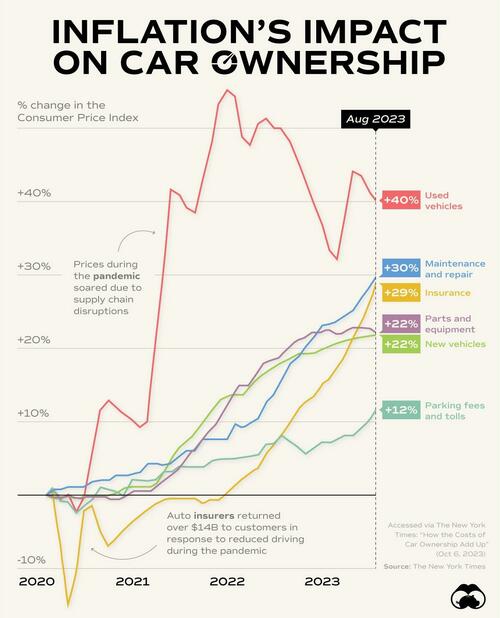-
.(* )New and utilized automobile costs have actually increased by 22% and 40% respectively due to pandemic-induced supply chain interruptions.
- .
- .(* )Gas costs have actually almost tripled considering that 2020, and automobile loan funding expenses have actually increased, adding to the greater total expense of vehicle ownership.
- Considering
Insurance coverage, upkeep, and repair work expenses have actually likewise risen, together with increased costs for parts, parking, and tolls.
.
purchasing a lorry

quickly? Increasing vehicle ownership expenses may trigger you to reconsider. Owning a truck or vehicle has actually ended up being much more pricey than in the past, even as just recently as 3 years earlier. In the following graphic, Visual Capitalist’s Marcus Lu and Pallavi Rao program,
utilizing information from the
New York City Times, how inflation has actually affected different elements of automobile ownership, based upon the portion modification in the Customer Rate Index (CPI). 1 Utilized Vehicle Rates Are Still Raised in 2023 Unsurprisingly, the greatest boosts are visited the

rate of brand-new and secondhand lorries
, up 22% and 40% respectively. Pandemic supply chain interruptions caused traffic jams on automobile shipments
, significantly rising utilized automobile costs in turn. Nevertheless, vehicle ownership expenses just continue to increase

after the automobile is gotten. Insurance coverage expenses are now almost 30% greater compared to 2020, together with repair and maintenance. If a part needs to be changed, that’s another 20% rate boost Even parking and tolls are up 12%. And naturally, for the majority of automobile owners we likewise need to think about the rate of gas, which has grown almost three-fold
considering that 2020. Lastly, funding expenses, which have actually increased steeply in combination with fast rate walkings over the in 2015, are weighing on America’s trillion dollar credit expense
Car loans are the second-highest regular monthly payment for U.S. homes after home mortgages. Created, the AAA quotes
the yearly expense of owning a brand-new vehicle in 2023 has actually reached $12,182, up 14% from in 2015. By Zerohedge.com More Leading Reads From Oilprice.com:
Download The Free Oilprice App Today
Back to homepage